|
34. Lycaena virgaureae (Linnaeus, 1758) / Scarce copper / Lycaenidae – Lycaeninae
NL: morgenrood / D: Dukatenfalter / F: cuivré de la verge d’or, l’argus satiné
 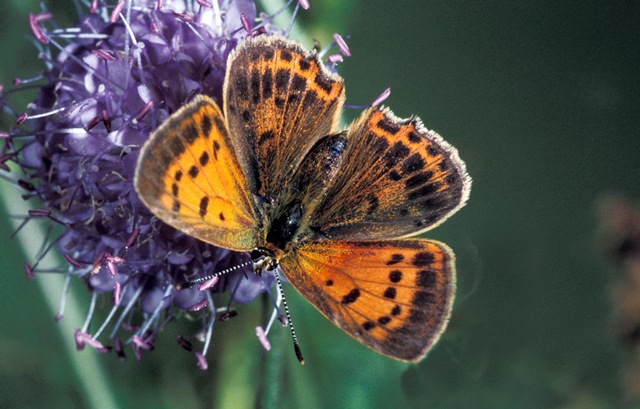 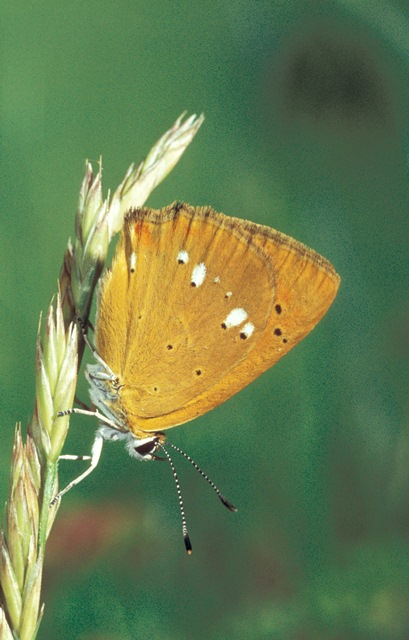
Photographs: Frits Bink ©.
Small, wing length 16 (14-17) mm. Scarce in the Benelux on a few sites in Wallonia and the northern part of Luxemburg in broad rides, verges, lightly grazed meadows or those cut very late in the season.
Butterfly is on the wing early-July until the end-August and peaks late-July. The species is known from sub-continental and severe continental climates, amplitude 8 to 20, on sites where there is a snow cover in wintertime. The required heat sum is 400°d and the maximum tolerated 1500°d, corresponding climate windows are 19 and 29 weeks.
It is remarkable because of the very long life span of the adult and its low daily egg production. In the Benelux it is scarce, but in neighbouring countries such as Denmark it is locally common in the north.
Ecological characteristics
Behaviour over time
Overwintering: egg, attached to stalk of host near to the ground.
Reproduction: oviposition starts after 9-12 days when the body contains 30 (21-48) eggs. Estimated production 3.2 as much.
Larval feeding periods: eight weeks from end-April until early-July.
Generations: always one.
Spreading of risk: not observed.
Life cycle: egg 37-41 weeks; larva 54 (52-57) days; pupa 16 (14-20) days.
Life span of adult: long, 5 weeks.
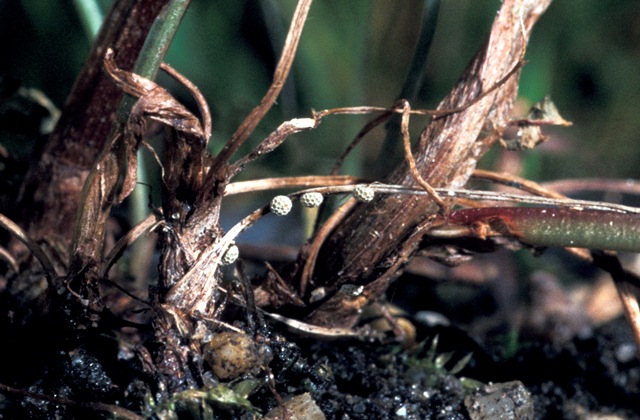 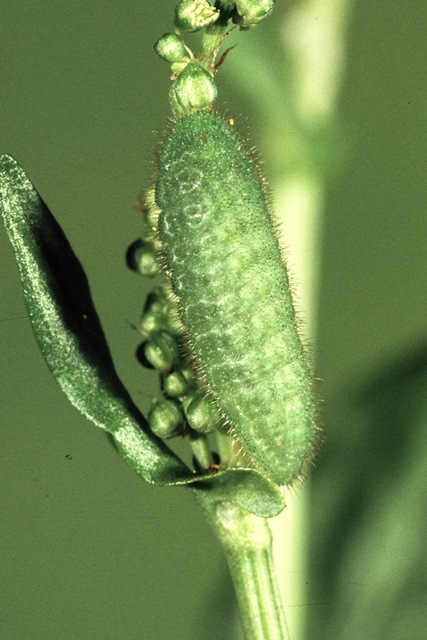
Photographs: Frits Bink ©.
Behaviour in space
From stay-at-home to migrant: males stay-at-home, spatial requirement very modest, females nomadic, spatial requirement modest.
Finding a mate: male perches, females seduce males.
Orientation in the landscape: areas of mosaic of tall and short grass.
Oviposition: on the stalk of the host-plant.
Defence
Threats from other organisms: vulnerable, no special defences.
Myrmecophily: very little, ants pay only scant attention to the larvae.
Threats from the environment: occurs only on sites with snow cover in winter.
Feeding habits
Adult: nectar, all kinds of herb flowers.
Larva: feeds mostly on mature leaves.
Larval foodplants
Plant species: Polygonaceae, Rumex acetosa, R. acetosella, R. crispus, R. thersiflorus.
Journal
Rearing experiments based on specimens from La Courtine, France:
5 September 1980: female captured and laid some eggs on a potted Rumex acetosa.
Overwintered outdoors.
1 April 1981: larvae 3 mm in length.
5 April: nine larvae in L2.
12 April: larvae 5 mm in length.
19 April: larvae 9 mm in length, hiding on underside of the leaves.
9 May: larvae ate the whole leaf including the stalk.
12 May: two larvae looked for place to pupate, crept under the litter layer.
18 May: three pupae found.
28 May: first adult appeared, male.
5 June: last adult, female.
Table 34-1. Results of dissections

Table 34-2. Collection and observation localities
B, Ethe 240 m, 49° 36’ 25”N – 5° 35’ 50”E; 11 July 1984.
D, Pottenstein 475 m, 49° 47’ 25”N - 11° 25’ 16”E; 23 July 1984, 15 June 1985.
DK, Ørnhej 56° 13´ 06”N – 8° 34´ 00”E; 14 July 2005.
EST, Endla Nature Reserve, 58° 52 34”N – 26° 16’21”E; 10 July 1999.
F, La Courtine 45° 45’N – 2° 15’E; 5 September 1980.
F, Vallouise 1200 m, 44° 51’ 18”N – 6° 29’ 28”E; 3 September 1982.
S, Hornslandet 61° 37’31”N – 17° 26’ 48”E; 17 August 1985.
S, Gotland, Klinteklinten 57° 40’ 14”N – 18° 46’ 26”E; 13 July 2004.
S, Gotland, Grogarns 57° 25’ 32”N – 18° 53’ 21”E; 14 July 2004.
S, Öland, Stenåsa 56° 32’ 44”N – 16° 36’ 43”E; 21 July 2004.
S, Östhammar 60° 23’ 01”N – 18° 26’ 51”E; 19 August 1985.
Fig. 34-1. Lycaena virgaureae, phenogram adapted from Fichefet et al. 2008: 125.
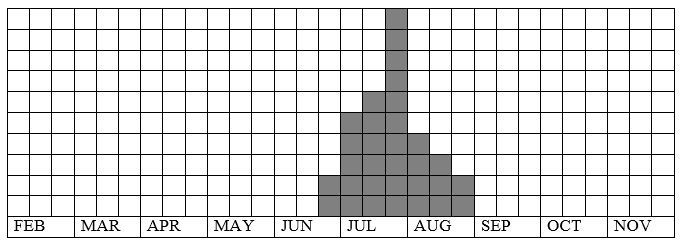
Fig. 34-2. Lycaena virgaureae, habitat characteristics.
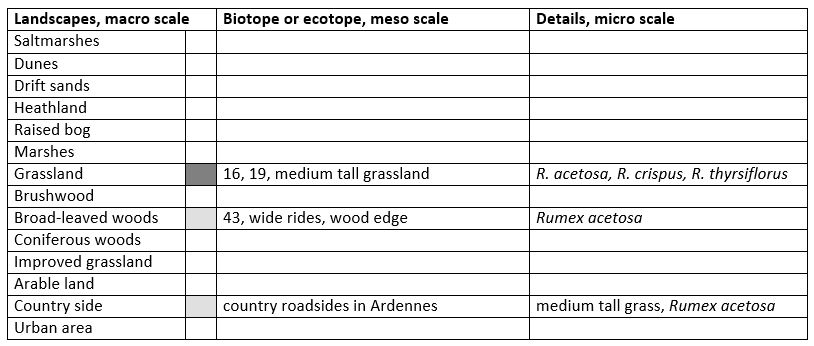
Fig. 34-3. Lycaena virgaureae, climate matrix, heat-sums 400 - 1500°d.
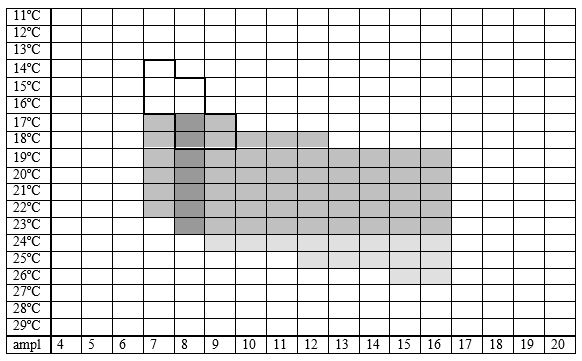
|










